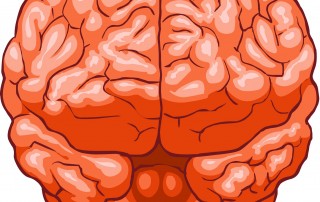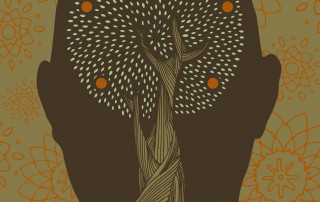Post-Traumatic Stress Disorder Post Traumatic Stress Disorder (PTSD) is diagnosed when an individual displays a cluster of symptoms that include various manifestations of the following: dissociation (feeling removed from reality), re-experiencing (flashbacks), and increased arousal (heightened stress response). In order for a diagnosis of PTSD to occur, however, these symptoms need to be as a result of the individual having been directly exposed to an event that threatened their life and/or safety or that of another individual. This criterion is known as the A1 criterion, since it is the primary criterion that must be present in order for diagnosis to occur. Amongst the general population, 7-8% of people will end up with PTSD at some point in their life. Within certain groups of people, however, such as individuals with substance-use disorders, the rate of diagnosis is much higher. For example, in one sample of substance-abusing psychiatric patients, researchers found that 90% had experienced physical/sexual assault and at least 50% met the diagnostic criteria for crime-related PTSD. However, there is a new direction of understanding with regard to trauma-related stress reactions; it is referred to as complex PTSD (CPTSD). Individuals in this category meet all of the same diagnostic criteria as […]
Facebook for Neurons: The Science of Anxiety
How to Change The Past
One of the most frequently used lines of false consolation that I hear is “you can’t change the past”. Usually this bit of indispensable wisdom is offered as a word of advice when someone is describing the impact of some negative event from their history, something that they wish had never happened and often something that continues to affect them to this day. Of course, this advice and apparent statement of the obvious is rarely helpful, which is not surprising if we look at the gist of this rejoinder. Let’s say you run breathless to the neighbour’s house, pounding on the door. They open the door and ask what’s going on. You tell them that there’s been a terrible accident and you need them to call an ambulance because you think your brother is dead. I don’t think anyone would feel justified or even attempt to rationalize a response such as, “Well, it’s in the past. You can’t change the past. You just have to let it go and get over it.” We would expect that person to offer help, to repair whatever damage had been done, within reason and their capability. Of course we wouldn’t expect them to take […]
From Shame to Compassion: A How-To Guide to Transforming Pain into Progress
The purpose of this post is to introduce a new way of thinking about problematic behavior. Many of us struggle to curb thoughts or behaviors that are ineffective at best and destructively corrosive at worst. We try and try again, only to meet with failure. Most of us throw our hands up and either set about resigning ourselves to the seemingly inevitable disappointing outcome of our existence, or continue to push against the same brick wall, using the same approach that has already proven so ineffective. This is the cycle of pain. Kathryn Schulz, journalist and author spoke at a TED conference about the experience of being wrong. She asked participants in the audience to describe how it felt to be wrong. Predictable answers ensued, focusing on the theme of embarrassment or similar emotions. She then pointed out that this was the experience of discovering that you have made a mistake, not the experience of actually making the mistake. She stated that the actual act of being wrong carries with it no emotion of its own; it only carries the emotion and meaning that we give to it. I would take Schulz’s idea a step further and point out that […]
Validating Your Brain (Part 2)
Read Part 1 here Keep in mind that your brain’s task is to survive the moment, not the long-term. Without fail, the automatic behaviors that our brain engages in are accomplishing this task. However, due to its lack of perspective, the brain does not have the ability to coordinate momentary survival with long-term survival. So when your brain is acting, thinking, and feeling on your behalf, what does it think is happening? When we experience automatic behavioral responses, what is the brain trying to tell us? Think of the following example. The next time you feel an itch on your skin (which will be fairly soon, given that I have now invited you to think about it), try to physically look at the area of your skin that is itchy but DO NOT ITCH IT! Just look at the itchy place. If you can’t physically see it, try to visualize it in your mind as vividly as possible. You may even want to visualize yourself itching it. I can almost guarantee that devoid of any foreign substance interference, if the itch is generated by your brain, looking at it alone will be sufficient intervention to remove it. Give it a […]
Validating Your Brain (Part 1)
rofessor Julie Baumberger, of Capella University, once told me “You are not your brain”. While to many, this statement may at first appear confusing, to me it made perfect sense. The fact that we are able to notice what we are noticing, to think about what we are thinking about (referred to as meta-thinking by hoity-toity academic types) seems to denote some separation between the physical and automatic processes of our lower brain centres and our higher brain centres. Some may take it further and say that it is evidence of the existence of some non-physical part of ourselves, whether it be a synergistic outcome of the firing of neurons or an intangible soul. That is an entirely different discussion and one that will not be tackled here. However, I would like to talk about Dr. Baumberger’s maxim and how we might apply it in a real way to improving our experience of our existence. First, we need to look at our brain and describe what it is and what its purpose is. If it is separate from me, are we on the same page? Do we want the same things? Do we have the same strategies by which we […]
Cane Toads: Are We Solving Problems or Creating Problems?
n the early part of the 20th century, Australian farmers whose livelihood was based upon sugar cane found themselves struggling with a dilemma. Their precious crop was being devoured by beetles. The farmers did not know what to do about the problem until they learned of a species of toad whose tadpoles were poisonous to almost all other creatures. After seeing these toads used to successfully control the pest population in a few other countries, the Australian government decided that it would be a good idea to import just over 100 of these little helpers. They then conducted a study a year later to see if their plan was working and to their delight, they found that it was. The toads, now called Cane Toads, were eating the beetles that had been so bothersome to the farmers. The farmers were so enthused by the success that they then released approximately 62,000 more Cane Toads to Australia within the next year. This is where things began to get interesting. Not only did the farmers note that the Cane Toads were not very successful in getting rid of the beetles, they also realized that the Cane Toads were having another, unanticipated, impact. […]
Understanding Anger
his is a brief outline of the class I teach, called “Understanding Anger” Each of these points is a discussion on its own but I hope they give you the opportunity to think. If you want to talk further about any of them, give me a call or send me an email. I’ll be posting more in-depth notes on many of these topics in the future. We are born helpless, with an instinct to attach to others. If we do not attach to others, we will die, since infants can do nothing for themselves. When we are born, the need to attach to others is the most important need of all. Literally nothing is as important as that. If we are not attached to a caregiver, then our other survival needs will not be provided for, meaning that emotional attachment is necessary for our very survival. Once we are securely attached to a caregiver, the reflex to attach begins to shrink in terms of importance. Attaching is no longer our number one priority. Instead we begin to learn about the world, about ourselves, about other people. Secure attachment allows us to venture out from our secure base, our caregiver, and […]







Recent Comments